Spatial Praxes: Theories of Space, Place, and Pedagogy
16.3 Summer 2012
Logging On
In This Issue
Jennifer Haley-Brown, Ashley J. Holmes, and Amy C. Kimme Hea, Guest Editors
-
Topoi
-
Polymorphous Perversity in Texts
Johndan Johnson-Eilola
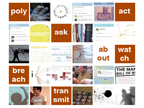
"Here's the tricky part: If we teach ourselves and our students that texts are made to be broken apart, remixed, remade, do we lose the polymorphous perversity that brought us pleasure in the first place? Does the pleasure of transgression evaporate when the borders are opened?"
-
Psychogeographies of Writing: Ma(r)king Space at the Limits of Representation
Scot Barnett
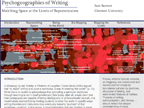
"Space matters, and regardless of our commitments to one theoretical framework or another, we should continue to invite students to write about space and about their embodied experiences with/in space. In so doing, however, we should be mindful of the worldviews our spatial rhetorics and pedagogies present and authorize, however implicitly."
-
A Geographical History of Online Rhetoric and Composition Journals
Jeremy Tirrell
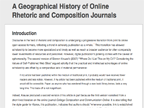
"The Mapping Digital Technology in Rhetoric and Composition History project can accommodate the geographical aspects of many relevant potential data sets, such as the locations of conferences, grant and award winners, book publications, graduate programs, job openings, and blog posts. The maps created for this article focus specifically on online rhetoric and composition journals and the discourses they contain."
-
-
Praxis
-
Space | Event | Movement: Reflections on a Spatial & Visual Rhetorics Graduate Course
Amy C. Kimme Hea, Adrienne Crump & Elise Verzosa, Crystal N. Fodrey, Anita Furtner Archer, Jennifer Haley-Brown, Ashley J. Holmes, Marissa M. Juarez, Londie T. Martin, and Jenna Vinson

"Our experiences in English 696e: Spatial and Visual Rhetorics culminated in a semester project that included large-scale installation projects and mini-workshops. This semester project was an event—titled svr2—that we hosted for our local community, particularly targeting an audience of first-year composition instructors who would be teaching visual and spatial analysis to undergraduate students as part of the University of Arizona's first-year composition curriculum."
-
Introduction and Background
Amy C. Kimme Hea

-
Visualizing Writing Space: A Reflection
Adrienne Crump & Elise Verzosa

-
Thrown Into Theory, Or How I Learned To Love Spatial Rhetoric
Crystal N. Fodrey

-
From Sound to Crisis: Strategic Mapping in the Classroom and Workplace
Anita Furtner Archer

-
Risky Writing in Unsafe Spaces
Jennifer Haley-Brown

-
The Essence of the Path: A Traveler's Tale of Finding Place
Ashley J. Holmes

-
Visual-Spatial Approach to Spontaneous Composing in First-Year Composition
Marissa M. Juarez
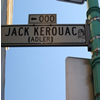
-
Thirdspacing the University: Performing Spatial and Visual Literacies
Londie T. Martin

-
Spatial Shock: Place, Space, and the Politics of Representation
Jenna Vinson

-
Spaces of the Hilltop: A Case Study of Community/Academic Interaction
Aaron Knochel & Dickie Selfe
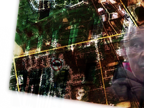
"The mapping imagery of the web interface is an attempt to illustrate the surprising element of the Hilltop project. The map is not "accurate." It shows real streets and highways in, around, and in-between the Ohio State University and the Hilltop community, but it is not intended to provide directions."
-

